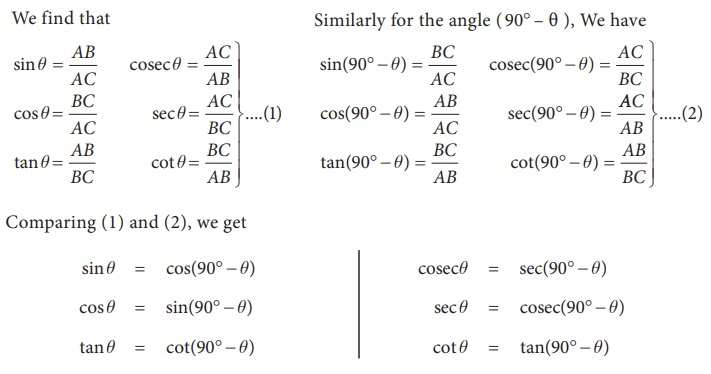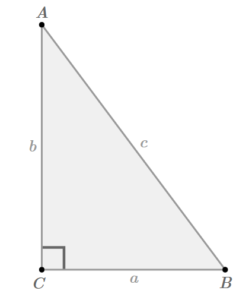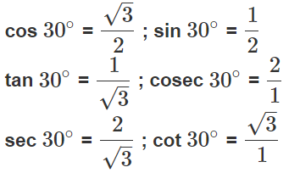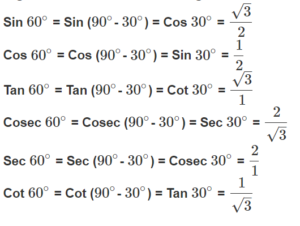In all triangles, the sum of the measures of all angles must be <span id="MathJax-Element-1-Frame" class="MathJax_SVG" style="box-sizing: border-box; margin: 0px; padding: 0px; border: 0px; font-style: normal; font-variant: inherit; font-weight: normal; font-stretch: inherit; font-size: 18px; line-height: normal; font-family: inherit; vertical-align: baseline; display: inline-block; text-indent: 0px; text-align: left; text-transform: none; letter-spacing: normal; word-spacing: normal; overflow-wrap: normal; white-space: nowrap; float: none; direction: ltr; max-width: none; max-height: none; min-width: 0px; min-height: 0px; outline: none; position: relative;" role="presentation" data-mathml="180∘.” data-mce-style=”box-sizing: border-box; margin: 0px; padding: 0px; border: 0px; font-style: normal; font-variant: inherit; font-weight: normal; font-stretch: inherit; font-size: 18px; line-height: normal; font-family: inherit; vertical-align: baseline; display: inline-block; text-indent: 0px; text-align: left; text-transform: none; letter-spacing: normal; word-spacing: normal; overflow-wrap: normal; white-space: nowrap; float: none; direction: ltr; max-width: none; max-height: none; min-width: 0px; min-height: 0px; outline: none; position: relative;” data-mce-tabindex=”0″>180∘. Since a right angle has a measure of <span id="MathJax-Element-2-Frame" class="MathJax_SVG" style="box-sizing: border-box; margin: 0px; padding: 0px; border: 0px; font-style: normal; font-variant: inherit; font-weight: normal; font-stretch: inherit; font-size: 18px; line-height: normal; font-family: inherit; vertical-align: baseline; display: inline-block; text-indent: 0px; text-align: left; text-transform: none; letter-spacing: normal; word-spacing: normal; overflow-wrap: normal; white-space: nowrap; float: none; direction: ltr; max-width: none; max-height: none; min-width: 0px; min-height: 0px; outline: none; position: relative;" role="presentation" data-mathml="90∘,” data-mce-style=”box-sizing: border-box; margin: 0px; padding: 0px; border: 0px; font-style: normal; font-variant: inherit; font-weight: normal; font-stretch: inherit; font-size: 18px; line-height: normal; font-family: inherit; vertical-align: baseline; display: inline-block; text-indent: 0px; text-align: left; text-transform: none; letter-spacing: normal; word-spacing: normal; overflow-wrap: normal; white-space: nowrap; float: none; direction: ltr; max-width: none; max-height: none; min-width: 0px; min-height: 0px; outline: none; position: relative;” data-mce-tabindex=”0″>90∘, the remaining two angles in a right-angled triangle must be complementary.
Trigonometric Ratio of Complementary Angles
” Two angles whose sum is <span id="MathJax-Element-1-Frame" class="MathJax" style="box-sizing: border-box; margin: 0px; padding: 0px; border: 0px; vertical-align: baseline; display: inline; font-weight: normal; line-height: normal; font-size: 15px; text-indent: 0px; text-align: left; text-transform: none; letter-spacing: normal; word-spacing: normal; overflow-wrap: normal; white-space: nowrap; float: none; direction: ltr; max-width: none; max-height: none; min-width: 0px; min-height: 0px; position: relative;" role="presentation" data-mathml="90∘” data-mce-style=”box-sizing: border-box; margin: 0px; padding: 0px; border: 0px; vertical-align: baseline; display: inline; font-weight: normal; line-height: normal; font-size: 15px; text-indent: 0px; text-align: left; text-transform: none; letter-spacing: normal; word-spacing: normal; overflow-wrap: normal; white-space: nowrap; float: none; direction: ltr; max-width: none; max-height: none; min-width: 0px; min-height: 0px; position: relative;” data-mce-tabindex=”0″>90∘ are called complementary angles.”
Two angles are said to be complementary if their sum is <span id="MathJax-Element-3-Frame" class="MathJax_SVG" style="box-sizing: border-box; margin: 0px; padding: 0px; border: 0px; font-style: normal; font-variant: inherit; font-weight: normal; font-stretch: inherit; font-size: 18px; line-height: normal; font-family: inherit; vertical-align: baseline; display: inline-block; text-indent: 0px; text-align: left; text-transform: none; letter-spacing: normal; word-spacing: normal; overflow-wrap: normal; white-space: nowrap; float: none; direction: ltr; max-width: none; max-height: none; min-width: 0px; min-height: 0px; outline: none; position: relative;" role="presentation" data-mathml="90∘” data-mce-style=”box-sizing: border-box; margin: 0px; padding: 0px; border: 0px; font-style: normal; font-variant: inherit; font-weight: normal; font-stretch: inherit; font-size: 18px; line-height: normal; font-family: inherit; vertical-align: baseline; display: inline-block; text-indent: 0px; text-align: left; text-transform: none; letter-spacing: normal; word-spacing: normal; overflow-wrap: normal; white-space: nowrap; float: none; direction: ltr; max-width: none; max-height: none; min-width: 0px; min-height: 0px; outline: none; position: relative;” data-mce-tabindex=”0″>90∘. It follows from the above definition that <span id="MathJax-Element-4-Frame" class="MathJax_SVG" style="box-sizing: border-box; margin: 0px; padding: 0px; border: 0px; font-style: normal; font-variant: inherit; font-weight: normal; font-stretch: inherit; font-size: 18px; line-height: normal; font-family: inherit; vertical-align: baseline; display: inline-block; text-indent: 0px; text-align: left; text-transform: none; letter-spacing: normal; word-spacing: normal; overflow-wrap: normal; white-space: nowrap; float: none; direction: ltr; max-width: none; max-height: none; min-width: 0px; min-height: 0px; outline: none; position: relative;" role="presentation" data-mathml="θ” data-mce-style=”box-sizing: border-box; margin: 0px; padding: 0px; border: 0px; font-style: normal; font-variant: inherit; font-weight: normal; font-stretch: inherit; font-size: 18px; line-height: normal; font-family: inherit; vertical-align: baseline; display: inline-block; text-indent: 0px; text-align: left; text-transform: none; letter-spacing: normal; word-spacing: normal; overflow-wrap: normal; white-space: nowrap; float: none; direction: ltr; max-width: none; max-height: none; min-width: 0px; min-height: 0px; outline: none; position: relative;” data-mce-tabindex=”0″>θ and <span id="MathJax-Element-5-Frame" class="MathJax_SVG" style="box-sizing: border-box; margin: 0px; padding: 0px; border: 0px; font-style: normal; font-variant: inherit; font-weight: normal; font-stretch: inherit; font-size: 18px; line-height: normal; font-family: inherit; vertical-align: baseline; display: inline-block; text-indent: 0px; text-align: left; text-transform: none; letter-spacing: normal; word-spacing: normal; overflow-wrap: normal; white-space: nowrap; float: none; direction: ltr; max-width: none; max-height: none; min-width: 0px; min-height: 0px; outline: none; position: relative;" role="presentation" data-mathml="(90∘−θ)” data-mce-style=”box-sizing: border-box; margin: 0px; padding: 0px; border: 0px; font-style: normal; font-variant: inherit; font-weight: normal; font-stretch: inherit; font-size: 18px; line-height: normal; font-family: inherit; vertical-align: baseline; display: inline-block; text-indent: 0px; text-align: left; text-transform: none; letter-spacing: normal; word-spacing: normal; overflow-wrap: normal; white-space: nowrap; float: none; direction: ltr; max-width: none; max-height: none; min-width: 0px; min-height: 0px; outline: none; position: relative;” data-mce-tabindex=”0″>(90∘−θ) are complementary angles for an acute angle <span id="MathJax-Element-6-Frame" class="MathJax_SVG" style="box-sizing: border-box; margin: 0px; padding: 0px; border: 0px; font-style: normal; font-variant: inherit; font-weight: normal; font-stretch: inherit; font-size: 18px; line-height: normal; font-family: inherit; vertical-align: baseline; display: inline-block; text-indent: 0px; text-align: left; text-transform: none; letter-spacing: normal; word-spacing: normal; overflow-wrap: normal; white-space: nowrap; float: none; direction: ltr; max-width: none; max-height: none; min-width: 0px; min-height: 0px; outline: none; position: relative;" role="presentation" data-mathml="θ” data-mce-style=”box-sizing: border-box; margin: 0px; padding: 0px; border: 0px; font-style: normal; font-variant: inherit; font-weight: normal; font-stretch: inherit; font-size: 18px; line-height: normal; font-family: inherit; vertical-align: baseline; display: inline-block; text-indent: 0px; text-align: left; text-transform: none; letter-spacing: normal; word-spacing: normal; overflow-wrap: normal; white-space: nowrap; float: none; direction: ltr; max-width: none; max-height: none; min-width: 0px; min-height: 0px; outline: none; position: relative;” data-mce-tabindex=”0″>θ. Recall that the sine and cosine of angles are ratios of pairs of sides in right-angled triangles.
- The sine of an angle in a right-angled triangle is the ratio of the side opposite the angle to the hypotenuse.
- The cosine of an angle in a right-angled triangle is the ratio of the side adjacent to the angle to the hypotenuse.
In a right-angled triangle, <span id="MathJax-Element-7-Frame" class="MathJax_SVG" style="box-sizing: border-box; margin: 0px; padding: 0px; border: 0px; font-style: normal; font-variant: inherit; font-weight: normal; font-stretch: inherit; font-size: 18px; line-height: normal; font-family: inherit; vertical-align: baseline; display: inline-block; text-indent: 0px; text-align: left; text-transform: none; letter-spacing: normal; word-spacing: normal; overflow-wrap: normal; white-space: nowrap; float: none; direction: ltr; max-width: none; max-height: none; min-width: 0px; min-height: 0px; outline: none; position: relative;" role="presentation" data-mathml="PQR” data-mce-style=”box-sizing: border-box; margin: 0px; padding: 0px; border: 0px; font-style: normal; font-variant: inherit; font-weight: normal; font-stretch: inherit; font-size: 18px; line-height: normal; font-family: inherit; vertical-align: baseline; display: inline-block; text-indent: 0px; text-align: left; text-transform: none; letter-spacing: normal; word-spacing: normal; overflow-wrap: normal; white-space: nowrap; float: none; direction: ltr; max-width: none; max-height: none; min-width: 0px; min-height: 0px; outline: none; position: relative;” data-mce-tabindex=”0″>ABC, right-angled at <span id="MathJax-Element-8-Frame" class="MathJax_SVG" style="box-sizing: border-box; margin: 0px; padding: 0px; border: 0px; font-style: normal; font-variant: inherit; font-weight: normal; font-stretch: inherit; font-size: 18px; line-height: normal; font-family: inherit; vertical-align: baseline; display: inline-block; text-indent: 0px; text-align: left; text-transform: none; letter-spacing: normal; word-spacing: normal; overflow-wrap: normal; white-space: nowrap; float: none; direction: ltr; max-width: none; max-height: none; min-width: 0px; min-height: 0px; outline: none; position: relative;" role="presentation" data-mathml="Q” data-mce-style=”box-sizing: border-box; margin: 0px; padding: 0px; border: 0px; font-style: normal; font-variant: inherit; font-weight: normal; font-stretch: inherit; font-size: 18px; line-height: normal; font-family: inherit; vertical-align: baseline; display: inline-block; text-indent: 0px; text-align: left; text-transform: none; letter-spacing: normal; word-spacing: normal; overflow-wrap: normal; white-space: nowrap; float: none; direction: ltr; max-width: none; max-height: none; min-width: 0px; min-height: 0px; outline: none; position: relative;” data-mce-tabindex=”0″>B, the sum of the measures of the three angles in a triangle is <span id="MathJax-Element-9-Frame" class="MathJax_SVG" style="box-sizing: border-box; margin: 0px; padding: 0px; border: 0px; font-style: normal; font-variant: inherit; font-weight: normal; font-stretch: inherit; font-size: 18px; line-height: normal; font-family: inherit; vertical-align: baseline; display: inline-block; text-indent: 0px; text-align: left; text-transform: none; letter-spacing: normal; word-spacing: normal; overflow-wrap: normal; white-space: nowrap; float: none; direction: ltr; max-width: none; max-height: none; min-width: 0px; min-height: 0px; outline: none; position: relative;" role="presentation" data-mathml="180∘” data-mce-style=”box-sizing: border-box; margin: 0px; padding: 0px; border: 0px; font-style: normal; font-variant: inherit; font-weight: normal; font-stretch: inherit; font-size: 18px; line-height: normal; font-family: inherit; vertical-align: baseline; display: inline-block; text-indent: 0px; text-align: left; text-transform: none; letter-spacing: normal; word-spacing: normal; overflow-wrap: normal; white-space: nowrap; float: none; direction: ltr; max-width: none; max-height: none; min-width: 0px; min-height: 0px; outline: none; position: relative;” data-mce-tabindex=”0″>180∘. This means that <span id="MathJax-Element-10-Frame" class="MathJax_SVG" style="box-sizing: border-box; margin: 0px; padding: 0px; border: 0px; font-style: normal; font-variant: inherit; font-weight: normal; font-stretch: inherit; font-size: 18px; line-height: normal; font-family: inherit; vertical-align: baseline; display: inline-block; text-indent: 0px; text-align: left; text-transform: none; letter-spacing: normal; word-spacing: normal; overflow-wrap: normal; white-space: nowrap; float: none; direction: ltr; max-width: none; max-height: none; min-width: 0px; min-height: 0px; outline: none; position: relative;" role="presentation" data-mathml="m∠P+m∠Q+m∠R=180∘” data-mce-style=”box-sizing: border-box; margin: 0px; padding: 0px; border: 0px; font-style: normal; font-variant: inherit; font-weight: normal; font-stretch: inherit; font-size: 18px; line-height: normal; font-family: inherit; vertical-align: baseline; display: inline-block; text-indent: 0px; text-align: left; text-transform: none; letter-spacing: normal; word-spacing: normal; overflow-wrap: normal; white-space: nowrap; float: none; direction: ltr; max-width: none; max-height: none; min-width: 0px; min-height: 0px; outline: none; position: relative;” data-mce-tabindex=”0″>m∠A + m∠B + m∠C = 180∘. <span id="MathJax-Element-11-Frame" class="MathJax_SVG" style="box-sizing: border-box; margin: 0px; padding: 0px; border: 0px; font-style: normal; font-variant: inherit; font-weight: normal; font-stretch: inherit; font-size: 18px; line-height: normal; font-family: inherit; vertical-align: baseline; display: inline-block; text-indent: 0px; text-align: left; text-transform: none; letter-spacing: normal; word-spacing: normal; overflow-wrap: normal; white-space: nowrap; float: none; direction: ltr; max-width: none; max-height: none; min-width: 0px; min-height: 0px; outline: none; position: relative;" role="presentation" data-mathml="∠Q” data-mce-style=”box-sizing: border-box; margin: 0px; padding: 0px; border: 0px; font-style: normal; font-variant: inherit; font-weight: normal; font-stretch: inherit; font-size: 18px; line-height: normal; font-family: inherit; vertical-align: baseline; display: inline-block; text-indent: 0px; text-align: left; text-transform: none; letter-spacing: normal; word-spacing: normal; overflow-wrap: normal; white-space: nowrap; float: none; direction: ltr; max-width: none; max-height: none; min-width: 0px; min-height: 0px; outline: none; position: relative;” data-mce-tabindex=”0″>∠B is a right angle so <span id="MathJax-Element-12-Frame" class="MathJax_SVG" style="box-sizing: border-box; margin: 0px; padding: 0px; border: 0px; font-style: normal; font-variant: inherit; font-weight: normal; font-stretch: inherit; font-size: 18px; line-height: normal; font-family: inherit; vertical-align: baseline; display: inline-block; text-indent: 0px; text-align: left; text-transform: none; letter-spacing: normal; word-spacing: normal; overflow-wrap: normal; white-space: nowrap; float: none; direction: ltr; max-width: none; max-height: none; min-width: 0px; min-height: 0px; outline: none; position: relative;" role="presentation" data-mathml="m∠Q=90∘” data-mce-style=”box-sizing: border-box; margin: 0px; padding: 0px; border: 0px; font-style: normal; font-variant: inherit; font-weight: normal; font-stretch: inherit; font-size: 18px; line-height: normal; font-family: inherit; vertical-align: baseline; display: inline-block; text-indent: 0px; text-align: left; text-transform: none; letter-spacing: normal; word-spacing: normal; overflow-wrap: normal; white-space: nowrap; float: none; direction: ltr; max-width: none; max-height: none; min-width: 0px; min-height: 0px; outline: none; position: relative;” data-mce-tabindex=”0″>m∠B = 90∘. Therefore, <span id="MathJax-Element-13-Frame" class="MathJax_SVG" style="box-sizing: border-box; margin: 0px; padding: 0px; border: 0px; font-style: normal; font-variant: inherit; font-weight: normal; font-stretch: inherit; font-size: 18px; line-height: normal; font-family: inherit; vertical-align: baseline; display: inline-block; text-indent: 0px; text-align: left; text-transform: none; letter-spacing: normal; word-spacing: normal; overflow-wrap: normal; white-space: nowrap; float: none; direction: ltr; max-width: none; max-height: none; min-width: 0px; min-height: 0px; outline: none; position: relative;" role="presentation" data-mathml="m∠P+m∠R=90∘” data-mce-style=”box-sizing: border-box; margin: 0px; padding: 0px; border: 0px; font-style: normal; font-variant: inherit; font-weight: normal; font-stretch: inherit; font-size: 18px; line-height: normal; font-family: inherit; vertical-align: baseline; display: inline-block; text-indent: 0px; text-align: left; text-transform: none; letter-spacing: normal; word-spacing: normal; overflow-wrap: normal; white-space: nowrap; float: none; direction: ltr; max-width: none; max-height: none; min-width: 0px; min-height: 0px; outline: none; position: relative;” data-mce-tabindex=”0″>m∠A + m∠C = 90∘. Since the measures of these acute angles add to <span id="MathJax-Element-14-Frame" class="MathJax_SVG" style="box-sizing: border-box; margin: 0px; padding: 0px; border: 0px; font-style: normal; font-variant: inherit; font-weight: normal; font-stretch: inherit; font-size: 18px; line-height: normal; font-family: inherit; vertical-align: baseline; display: inline-block; text-indent: 0px; text-align: left; text-transform: none; letter-spacing: normal; word-spacing: normal; overflow-wrap: normal; white-space: nowrap; float: none; direction: ltr; max-width: none; max-height: none; min-width: 0px; min-height: 0px; outline: none; position: relative;" role="presentation" data-mathml="90∘” data-mce-style=”box-sizing: border-box; margin: 0px; padding: 0px; border: 0px; font-style: normal; font-variant: inherit; font-weight: normal; font-stretch: inherit; font-size: 18px; line-height: normal; font-family: inherit; vertical-align: baseline; display: inline-block; text-indent: 0px; text-align: left; text-transform: none; letter-spacing: normal; word-spacing: normal; overflow-wrap: normal; white-space: nowrap; float: none; direction: ltr; max-width: none; max-height: none; min-width: 0px; min-height: 0px; outline: none; position: relative;” data-mce-tabindex=”0″>90∘, we know these acute angles are complementary.

- The sine of any acute angle is equal to the cosine of its complement and vice versa.
- The <span class="x-ck12-vocab-interlink" style="box-sizing: border-box; margin: 0px; padding: 0px; border: 0px; font: inherit; vertical-align: baseline; color: var(–link-base-color); text-decoration: none; cursor: pointer;" role="term" data-equation_latex="\cot{\theta}=\frac{1}{\tan{\theta}}” data-plural=”” data-definition=”The%20cotangent%20of%20an%20angle%20in%20a%20right%20triangle%20is%20a%20relationship%20found%20by%20dividing%20the%20length%20of%20the%20side%20adjacent%20to%20the%20given%20angle%20by%20the%20length%20of%20the%20side%20opposite%20to%20the%20given%20angle.%20If%20the%20hypotenuse%20is%20of%20unit%20length%2C%20the%20cotangent%20is%20the%20reciprocal%20of%20the%20tangent%20function%20or%20%3Cmath%3E%5Ccot%7B%5Ctheta%7D%3D%5Cfrac%7B1%7D%7B%5Ctan%7B%5Ctheta%7D%7D%3C/math%3E.” data-id=”13614″ data-languageid=”1″ data-term=”Cotangent” data-json=”eyJkYXRhLWVxdWF0aW9uX2xhdGV4IjogIjxtYXRoPlxcY290e1xcdGhldGF9PVxcZnJhY3sxfXtcXHRhbntcXHRoZXRhfX08L21hdGg+IiwgImRhdGEtcGx1cmFsIjogIiIsICJkYXRhLWRlZmluaXRpb24iOiAiVGhlJTIwY290YW5nZW50JTIwb2YlMjBhbiUyMGFuZ2xlJTIwaW4lMjBhJTIwcmlnaHQlMjB0cmlhbmdsZSUyMGlzJTIwYSUyMHJlbGF0aW9uc2hpcCUyMGZvdW5kJTIwYnklMjBkaXZpZGluZyUyMHRoZSUyMGxlbmd0aCUyMG9mJTIwdGhlJTIwc2lkZSUyMGFkamFjZW50JTIwdG8lMjB0aGUlMjBnaXZlbiUyMGFuZ2xlJTIwYnklMjB0aGUlMjBsZW5ndGglMjBvZiUyMHRoZSUyMHNpZGUlMjBvcHBvc2l0ZSUyMHRvJTIwdGhlJTIwZ2l2ZW4lMjBhbmdsZS4lMjBJZiUyMHRoZSUyMGh5cG90ZW51c2UlMjBpcyUyMG9mJTIwdW5pdCUyMGxlbmd0aCUyQyUyMHRoZSUyMGNvdGFuZ2VudCUyMGlzJTIwdGhlJTIwcmVjaXByb2NhbCUyMG9mJTIwdGhlJTIwdGFuZ2VudCUyMGZ1bmN0aW9uJTIwb3IlMjAlM0NtYXRoJTNFJTVDY290JTdCJTVDdGhldGElN0QlM0QlNUNmcmFjJTdCMSU3RCU3QiU1Q3RhbiU3QiU1Q3RoZXRhJTdEJTdEJTNDL21hdGglM0UuIiwgImRhdGEtaWQiOiAxMzYxNCwgImRhdGEtbGFuZ3VhZ2VJRCI6IDEsICJkYXRhLXRlcm0iOiAiQ290YW5nZW50In0=” data-interlink-id=”x-ck12-9m6vhoirvanecytp” data-mce-style=”box-sizing: border-box; margin: 0px; padding: 0px; border: 0px; font: inherit; vertical-align: baseline; color: var(–link-base-color); text-decoration: none; cursor: pointer;” data-mce-tabindex=”0″>cotangent of any acute angle is equal to the tangent of its complement and vice versa.
- The <span class="x-ck12-vocab-interlink" style="box-sizing: border-box; margin: 0px; padding: 0px; border: 0px; font: inherit; vertical-align: baseline; color: var(–link-base-color); text-decoration: none; cursor: pointer;" role="term" data-equation_latex="\csc{\theta}=\frac{1}{\sin{\theta}}” data-plural=”” data-definition=”The%20cosecant%20of%20an%20angle%20in%20a%20right%20triangle%20is%20a%20relationship%20found%20by%20dividing%20the%20length%20of%20the%20hypotenuse%20by%20the%20length%20of%20the%20side%20opposite%20to%20the%20given%20angle.%20If%20the%20hypotenuse%20is%20of%20unit%20length%2C%20the%20cosecant%20is%20the%20reciprocal%20of%20the%20sine%20function%20or%20%3Cmath%3E%5Ccsc%7B%5Ctheta%7D%3D%5Cfrac%7B1%7D%7B%5Csin%7B%5Ctheta%7D%7D%3C/math%3E.” data-id=”13610″ data-languageid=”1″ data-term=”Cosecant” data-json=”eyJkYXRhLWVxdWF0aW9uX2xhdGV4IjogIjxtYXRoPlxcY3Nje1xcdGhldGF9PVxcZnJhY3sxfXtcXHNpbntcXHRoZXRhfX08L21hdGg+IiwgImRhdGEtcGx1cmFsIjogIiIsICJkYXRhLWRlZmluaXRpb24iOiAiVGhlJTIwY29zZWNhbnQlMjBvZiUyMGFuJTIwYW5nbGUlMjBpbiUyMGElMjByaWdodCUyMHRyaWFuZ2xlJTIwaXMlMjBhJTIwcmVsYXRpb25zaGlwJTIwZm91bmQlMjBieSUyMGRpdmlkaW5nJTIwdGhlJTIwbGVuZ3RoJTIwb2YlMjB0aGUlMjBoeXBvdGVudXNlJTIwYnklMjB0aGUlMjBsZW5ndGglMjBvZiUyMHRoZSUyMHNpZGUlMjBvcHBvc2l0ZSUyMHRvJTIwdGhlJTIwZ2l2ZW4lMjBhbmdsZS4lMjBJZiUyMHRoZSUyMGh5cG90ZW51c2UlMjBpcyUyMG9mJTIwdW5pdCUyMGxlbmd0aCUyQyUyMHRoZSUyMGNvc2VjYW50JTIwaXMlMjB0aGUlMjByZWNpcHJvY2FsJTIwb2YlMjB0aGUlMjBzaW5lJTIwZnVuY3Rpb24lMjBvciUyMCUzQ21hdGglM0UlNUNjc2MlN0IlNUN0aGV0YSU3RCUzRCU1Q2ZyYWMlN0IxJTdEJTdCJTVDc2luJTdCJTVDdGhldGElN0QlN0QlM0MvbWF0aCUzRS4iLCAiZGF0YS1pZCI6IDEzNjEwLCAiZGF0YS1sYW5ndWFnZUlEIjogMSwgImRhdGEtdGVybSI6ICJDb3NlY2FudCJ9″ data-interlink-id=”x-ck12-gbk2ga3j3yxm0rq4″ data-mce-style=”box-sizing: border-box; margin: 0px; padding: 0px; border: 0px; font: inherit; vertical-align: baseline; color: var(–link-base-color); text-decoration: none; cursor: pointer;” data-mce-tabindex=”0″>cosecant of any acute angle is equal to the secant of its complement and vice versa.
Example:
If <span id="MathJax-Element-53-Frame" class="MathJax_SVG" style="box-sizing: border-box; margin: 0px; padding: 0px; border: 0px; font-style: normal; font-variant: inherit; font-weight: normal; font-stretch: inherit; font-size: 18px; line-height: normal; font-family: inherit; vertical-align: baseline; display: inline-block; text-indent: 0px; text-align: left; text-transform: none; letter-spacing: normal; word-spacing: normal; overflow-wrap: normal; white-space: nowrap; float: none; direction: ltr; max-width: none; max-height: none; min-width: 0px; min-height: 0px; outline: none; position: relative;" role="presentation" data-mathml="sin30∘=12, cos?=12″ data-mce-style=”box-sizing: border-box; margin: 0px; padding: 0px; border: 0px; font-style: normal; font-variant: inherit; font-weight: normal; font-stretch: inherit; font-size: 18px; line-height: normal; font-family: inherit; vertical-align: baseline; display: inline-block; text-indent: 0px; text-align: left; text-transform: none; letter-spacing: normal; word-spacing: normal; overflow-wrap: normal; white-space: nowrap; float: none; direction: ltr; max-width: none; max-height: none; min-width: 0px; min-height: 0px; outline: none; position: relative;” data-mce-tabindex=”0″>sin30∘ = 1/2, cos ? = 1/2.
The sine and cosine of complementary angles are equal.
<span id="MathJax-Element-54-Frame" class="MathJax_SVG" style="box-sizing: border-box; margin: 0px; padding: 0px; border: 0px; font-style: normal; font-variant: inherit; font-weight: normal; font-stretch: inherit; font-size: 18px; line-height: normal; font-family: inherit; vertical-align: baseline; display: inline-block; text-indent: 0px; text-align: left; text-transform: none; letter-spacing: normal; word-spacing: normal; overflow-wrap: normal; white-space: nowrap; float: none; direction: ltr; max-width: none; max-height: none; min-width: 0px; min-height: 0px; outline: none; position: relative;" role="presentation" data-mathml="90∘−30∘=60∘” data-mce-style=”box-sizing: border-box; margin: 0px; padding: 0px; border: 0px; font-style: normal; font-variant: inherit; font-weight: normal; font-stretch: inherit; font-size: 18px; line-height: normal; font-family: inherit; vertical-align: baseline; display: inline-block; text-indent: 0px; text-align: left; text-transform: none; letter-spacing: normal; word-spacing: normal; overflow-wrap: normal; white-space: nowrap; float: none; direction: ltr; max-width: none; max-height: none; min-width: 0px; min-height: 0px; outline: none; position: relative;” data-mce-tabindex=”0″>90∘ − 30∘ = 60∘ is complementary to <span id="MathJax-Element-55-Frame" class="MathJax_SVG" style="box-sizing: border-box; margin: 0px; padding: 0px; border: 0px; font-style: normal; font-variant: inherit; font-weight: normal; font-stretch: inherit; font-size: 18px; line-height: normal; font-family: inherit; vertical-align: baseline; display: inline-block; text-indent: 0px; text-align: left; text-transform: none; letter-spacing: normal; word-spacing: normal; overflow-wrap: normal; white-space: nowrap; float: none; direction: ltr; max-width: none; max-height: none; min-width: 0px; min-height: 0px; outline: none; position: relative;" role="presentation" data-mathml="30∘” data-mce-style=”box-sizing: border-box; margin: 0px; padding: 0px; border: 0px; font-style: normal; font-variant: inherit; font-weight: normal; font-stretch: inherit; font-size: 18px; line-height: normal; font-family: inherit; vertical-align: baseline; display: inline-block; text-indent: 0px; text-align: left; text-transform: none; letter-spacing: normal; word-spacing: normal; overflow-wrap: normal; white-space: nowrap; float: none; direction: ltr; max-width: none; max-height: none; min-width: 0px; min-height: 0px; outline: none; position: relative;” data-mce-tabindex=”0″>30∘.
Therefore, <span id="MathJax-Element-56-Frame" class="MathJax_SVG" style="box-sizing: border-box; margin: 0px; padding: 0px; border: 0px; font-style: normal; font-variant: inherit; font-weight: normal; font-stretch: inherit; font-size: 18px; line-height: normal; font-family: inherit; vertical-align: baseline; display: inline-block; text-indent: 0px; text-align: left; text-transform: none; letter-spacing: normal; word-spacing: normal; overflow-wrap: normal; white-space: nowrap; float: none; direction: ltr; max-width: none; max-height: none; min-width: 0px; min-height: 0px; outline: none; position: relative;" role="presentation" data-mathml="cos60∘=12″ data-mce-style=”box-sizing: border-box; margin: 0px; padding: 0px; border: 0px; font-style: normal; font-variant: inherit; font-weight: normal; font-stretch: inherit; font-size: 18px; line-height: normal; font-family: inherit; vertical-align: baseline; display: inline-block; text-indent: 0px; text-align: left; text-transform: none; letter-spacing: normal; word-spacing: normal; overflow-wrap: normal; white-space: nowrap; float: none; direction: ltr; max-width: none; max-height: none; min-width: 0px; min-height: 0px; outline: none; position: relative;” data-mce-tabindex=”0″>cos60∘=1/2.
Example:
Consider the right-angled triangle below. Find <span id="MathJax-Element-57-Frame" class="MathJax_SVG" style="box-sizing: border-box; margin: 0px; padding: 0px; border: 0px; font-style: normal; font-variant: inherit; font-weight: normal; font-stretch: inherit; font-size: 18px; line-height: normal; font-family: inherit; vertical-align: baseline; display: inline-block; text-indent: 0px; text-align: left; text-transform: none; letter-spacing: normal; word-spacing: normal; overflow-wrap: normal; white-space: nowrap; float: none; direction: ltr; max-width: none; max-height: none; min-width: 0px; min-height: 0px; outline: none; position: relative;" role="presentation" data-mathml="tanA” data-mce-style=”box-sizing: border-box; margin: 0px; padding: 0px; border: 0px; font-style: normal; font-variant: inherit; font-weight: normal; font-stretch: inherit; font-size: 18px; line-height: normal; font-family: inherit; vertical-align: baseline; display: inline-block; text-indent: 0px; text-align: left; text-transform: none; letter-spacing: normal; word-spacing: normal; overflow-wrap: normal; white-space: nowrap; float: none; direction: ltr; max-width: none; max-height: none; min-width: 0px; min-height: 0px; outline: none; position: relative;” data-mce-tabindex=”0″>tanA and <span id="MathJax-Element-58-Frame" class="MathJax_SVG" style="box-sizing: border-box; margin: 0px; padding: 0px; border: 0px; font-style: normal; font-variant: inherit; font-weight: normal; font-stretch: inherit; font-size: 18px; line-height: normal; font-family: inherit; vertical-align: baseline; display: inline-block; text-indent: 0px; text-align: left; text-transform: none; letter-spacing: normal; word-spacing: normal; overflow-wrap: normal; white-space: nowrap; float: none; direction: ltr; max-width: none; max-height: none; min-width: 0px; min-height: 0px; outline: none; position: relative;" role="presentation" data-mathml="tanB” data-mce-style=”box-sizing: border-box; margin: 0px; padding: 0px; border: 0px; font-style: normal; font-variant: inherit; font-weight: normal; font-stretch: inherit; font-size: 18px; line-height: normal; font-family: inherit; vertical-align: baseline; display: inline-block; text-indent: 0px; text-align: left; text-transform: none; letter-spacing: normal; word-spacing: normal; overflow-wrap: normal; white-space: nowrap; float: none; direction: ltr; max-width: none; max-height: none; min-width: 0px; min-height: 0px; outline: none; position: relative;” data-mce-tabindex=”0″>tanB.

<span id="MathJax-Element-59-Frame" class="MathJax_SVG" style="box-sizing: border-box; margin: 0px; padding: 0px; border: 0px; font-style: normal; font-variant: inherit; font-weight: normal; font-stretch: inherit; font-size: 18px; line-height: normal; font-family: inherit; vertical-align: baseline; display: inline-block; text-indent: 0px; text-align: left; text-transform: none; letter-spacing: normal; word-spacing: normal; overflow-wrap: normal; white-space: nowrap; float: none; direction: ltr; max-width: none; max-height: none; min-width: 0px; min-height: 0px; outline: none; position: relative;" role="presentation" data-mathml="tanA=BCAC=ab” data-mce-style=”box-sizing: border-box; margin: 0px; padding: 0px; border: 0px; font-style: normal; font-variant: inherit; font-weight: normal; font-stretch: inherit; font-size: 18px; line-height: normal; font-family: inherit; vertical-align: baseline; display: inline-block; text-indent: 0px; text-align: left; text-transform: none; letter-spacing: normal; word-spacing: normal; overflow-wrap: normal; white-space: nowrap; float: none; direction: ltr; max-width: none; max-height: none; min-width: 0px; min-height: 0px; outline: none; position: relative;” data-mce-tabindex=”0″>tanA=BC/AC=a/b and <span id="MathJax-Element-60-Frame" class="MathJax_SVG" style="box-sizing: border-box; margin: 0px; padding: 0px; border: 0px; font-style: normal; font-variant: inherit; font-weight: normal; font-stretch: inherit; font-size: 18px; line-height: normal; font-family: inherit; vertical-align: baseline; display: inline-block; text-indent: 0px; text-align: left; text-transform: none; letter-spacing: normal; word-spacing: normal; overflow-wrap: normal; white-space: nowrap; float: none; direction: ltr; max-width: none; max-height: none; min-width: 0px; min-height: 0px; outline: none; position: relative;" role="presentation" data-mathml="tanB=ACBC=ba” data-mce-style=”box-sizing: border-box; margin: 0px; padding: 0px; border: 0px; font-style: normal; font-variant: inherit; font-weight: normal; font-stretch: inherit; font-size: 18px; line-height: normal; font-family: inherit; vertical-align: baseline; display: inline-block; text-indent: 0px; text-align: left; text-transform: none; letter-spacing: normal; word-spacing: normal; overflow-wrap: normal; white-space: nowrap; float: none; direction: ltr; max-width: none; max-height: none; min-width: 0px; min-height: 0px; outline: none; position: relative;” data-mce-tabindex=”0″>tanB=AC/BC=b/a.
The tangent of any angle is opposite over adjacent so <span id="MathJax-Element-61-Frame" class="MathJax_SVG" style="box-sizing: border-box; margin: 0px; padding: 0px; border: 0px; font-style: normal; font-variant: inherit; font-weight: normal; font-stretch: inherit; font-size: 18px; line-height: normal; font-family: inherit; vertical-align: baseline; display: inline-block; text-indent: 0px; text-align: left; text-transform: none; letter-spacing: normal; word-spacing: normal; overflow-wrap: normal; white-space: nowrap; float: none; direction: ltr; max-width: none; max-height: none; min-width: 0px; min-height: 0px; outline: none; position: relative;" role="presentation" data-mathml="tanB=ACBC” data-mce-style=”box-sizing: border-box; margin: 0px; padding: 0px; border: 0px; font-style: normal; font-variant: inherit; font-weight: normal; font-stretch: inherit; font-size: 18px; line-height: normal; font-family: inherit; vertical-align: baseline; display: inline-block; text-indent: 0px; text-align: left; text-transform: none; letter-spacing: normal; word-spacing: normal; overflow-wrap: normal; white-space: nowrap; float: none; direction: ltr; max-width: none; max-height: none; min-width: 0px; min-height: 0px; outline: none; position: relative;” data-mce-tabindex=”0″>tanB=AC/BC and <span id="MathJax-Element-62-Frame" class="MathJax_SVG" style="box-sizing: border-box; margin: 0px; padding: 0px; border: 0px; font-style: normal; font-variant: inherit; font-weight: normal; font-stretch: inherit; font-size: 18px; line-height: normal; font-family: inherit; vertical-align: baseline; display: inline-block; text-indent: 0px; text-align: left; text-transform: none; letter-spacing: normal; word-spacing: normal; overflow-wrap: normal; white-space: nowrap; float: none; direction: ltr; max-width: none; max-height: none; min-width: 0px; min-height: 0px; outline: none; position: relative;" role="presentation" data-mathml="tanA=BCAC” data-mce-style=”box-sizing: border-box; margin: 0px; padding: 0px; border: 0px; font-style: normal; font-variant: inherit; font-weight: normal; font-stretch: inherit; font-size: 18px; line-height: normal; font-family: inherit; vertical-align: baseline; display: inline-block; text-indent: 0px; text-align: left; text-transform: none; letter-spacing: normal; word-spacing: normal; overflow-wrap: normal; white-space: nowrap; float: none; direction: ltr; max-width: none; max-height: none; min-width: 0px; min-height: 0px; outline: none; position: relative;” data-mce-tabindex=”0″>tanA=BC/AC. These are inverses of each other, therefore the tangents of complementary angles are inverses of each other.
Example:
Given the trigonometric ratios of <span id="MathJax-Element-39-Frame" class="MathJax" style="box-sizing: border-box; margin: 0px; padding: 0px; border: 0px; vertical-align: baseline; display: inline; font-style: normal; font-weight: normal; line-height: normal; font-size: 15px; text-indent: 0px; text-align: left; text-transform: none; letter-spacing: normal; word-spacing: normal; overflow-wrap: normal; white-space: nowrap; float: none; direction: ltr; max-width: none; max-height: none; min-width: 0px; min-height: 0px; position: relative;" role="presentation" data-mathml="30∘” data-mce-style=”box-sizing: border-box; margin: 0px; padding: 0px; border: 0px; vertical-align: baseline; display: inline; font-style: normal; font-weight: normal; line-height: normal; font-size: 15px; text-indent: 0px; text-align: left; text-transform: none; letter-spacing: normal; word-spacing: normal; overflow-wrap: normal; white-space: nowrap; float: none; direction: ltr; max-width: none; max-height: none; min-width: 0px; min-height: 0px; position: relative;” data-mce-tabindex=”0″>30∘, find all the six trigonometric ratios of <span id="MathJax-Element-40-Frame" class="MathJax" style="box-sizing: border-box; margin: 0px; padding: 0px; border: 0px; vertical-align: baseline; display: inline; font-style: normal; font-weight: normal; line-height: normal; font-size: 15px; text-indent: 0px; text-align: left; text-transform: none; letter-spacing: normal; word-spacing: normal; overflow-wrap: normal; white-space: nowrap; float: none; direction: ltr; max-width: none; max-height: none; min-width: 0px; min-height: 0px; position: relative;" role="presentation" data-mathml="60∘” data-mce-style=”box-sizing: border-box; margin: 0px; padding: 0px; border: 0px; vertical-align: baseline; display: inline; font-style: normal; font-weight: normal; line-height: normal; font-size: 15px; text-indent: 0px; text-align: left; text-transform: none; letter-spacing: normal; word-spacing: normal; overflow-wrap: normal; white-space: nowrap; float: none; direction: ltr; max-width: none; max-height: none; min-width: 0px; min-height: 0px; position: relative;” data-mce-tabindex=”0″>60∘

Solution:
Since <span id="MathJax-Element-53-Frame" class="MathJax" style="box-sizing: border-box; margin: 0px; padding: 0px; border: 0px; vertical-align: baseline; display: inline; font-style: normal; font-weight: normal; line-height: normal; font-size: 15px; text-indent: 0px; text-align: left; text-transform: none; letter-spacing: normal; word-spacing: normal; overflow-wrap: normal; white-space: nowrap; float: none; direction: ltr; max-width: none; max-height: none; min-width: 0px; min-height: 0px; position: relative;" role="presentation" data-mathml="30∘” data-mce-style=”box-sizing: border-box; margin: 0px; padding: 0px; border: 0px; vertical-align: baseline; display: inline; font-style: normal; font-weight: normal; line-height: normal; font-size: 15px; text-indent: 0px; text-align: left; text-transform: none; letter-spacing: normal; word-spacing: normal; overflow-wrap: normal; white-space: nowrap; float: none; direction: ltr; max-width: none; max-height: none; min-width: 0px; min-height: 0px; position: relative;” data-mce-tabindex=”0″>30∘ and <span id="MathJax-Element-54-Frame" class="MathJax" style="box-sizing: border-box; margin: 0px; padding: 0px; border: 0px; vertical-align: baseline; display: inline; font-style: normal; font-weight: normal; line-height: normal; font-size: 15px; text-indent: 0px; text-align: left; text-transform: none; letter-spacing: normal; word-spacing: normal; overflow-wrap: normal; white-space: nowrap; float: none; direction: ltr; max-width: none; max-height: none; min-width: 0px; min-height: 0px; position: relative;" role="presentation" data-mathml="60∘” data-mce-style=”box-sizing: border-box; margin: 0px; padding: 0px; border: 0px; vertical-align: baseline; display: inline; font-style: normal; font-weight: normal; line-height: normal; font-size: 15px; text-indent: 0px; text-align: left; text-transform: none; letter-spacing: normal; word-spacing: normal; overflow-wrap: normal; white-space: nowrap; float: none; direction: ltr; max-width: none; max-height: none; min-width: 0px; min-height: 0px; position: relative;” data-mce-tabindex=”0″>60∘ are complementary angles, we can use the method of co-ratios to determine trigonometric ratios of <span id="MathJax-Element-55-Frame" class="MathJax" style="box-sizing: border-box; margin: 0px; padding: 0px; border: 0px; vertical-align: baseline; display: inline; font-style: normal; font-weight: normal; line-height: normal; font-size: 15px; text-indent: 0px; text-align: left; text-transform: none; letter-spacing: normal; word-spacing: normal; overflow-wrap: normal; white-space: nowrap; float: none; direction: ltr; max-width: none; max-height: none; min-width: 0px; min-height: 0px; position: relative;" role="presentation" data-mathml="60∘” data-mce-style=”box-sizing: border-box; margin: 0px; padding: 0px; border: 0px; vertical-align: baseline; display: inline; font-style: normal; font-weight: normal; line-height: normal; font-size: 15px; text-indent: 0px; text-align: left; text-transform: none; letter-spacing: normal; word-spacing: normal; overflow-wrap: normal; white-space: nowrap; float: none; direction: ltr; max-width: none; max-height: none; min-width: 0px; min-height: 0px; position: relative;” data-mce-tabindex=”0″>60∘ using those of <span id="MathJax-Element-56-Frame" class="MathJax" style="box-sizing: border-box; margin: 0px; padding: 0px; border: 0px; vertical-align: baseline; display: inline; font-style: normal; font-weight: normal; line-height: normal; font-size: 15px; text-indent: 0px; text-align: left; text-transform: none; letter-spacing: normal; word-spacing: normal; overflow-wrap: normal; white-space: nowrap; float: none; direction: ltr; max-width: none; max-height: none; min-width: 0px; min-height: 0px; position: relative;" role="presentation" data-mathml="30∘” data-mce-style=”box-sizing: border-box; margin: 0px; padding: 0px; border: 0px; vertical-align: baseline; display: inline; font-style: normal; font-weight: normal; line-height: normal; font-size: 15px; text-indent: 0px; text-align: left; text-transform: none; letter-spacing: normal; word-spacing: normal; overflow-wrap: normal; white-space: nowrap; float: none; direction: ltr; max-width: none; max-height: none; min-width: 0px; min-height: 0px; position: relative;” data-mce-tabindex=”0″>30∘ as shown below:
